From the dark grey walls of a quiet gallery in the Lehman Wing of the Metropolitan Museum there glow forth some 30 seminal works of the Pre-Raphaelite Brotherhood, arguably England’s most lyrical and seductive contribution to the fine arts. These are works that bewitch, with a mimesis of female beauty unequalled except in the High Renaissance or in, let us say, the head of Nefertiti in the Neues Museum in Berlin.
It is female beauty, however, of a peculiarly languid sort, the beauty of the muse who reigns through submission, the languor of the models – Elizabeth Siddal comes to mind – intensified, all too often, by laudanum or chloral. Her sovereignty arises through acquiescence, a majestic suspense of self in the service of myth.
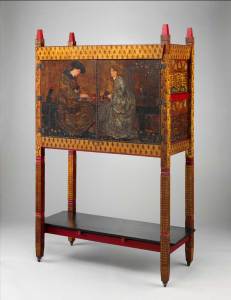
The Backgammon Players (1861), painted by Edward Burne-Jones. Morris, Marshall, Faulkner & Co. The Metropolitan Museum of Art, Rogers Fund, 1926
The exhibition opens with a rare and precious work of applied art; the cabinet, designed by Philip Webb and painted by Edward Burne-Jones, entitled The Backgammon Players. Its prominence reminds us that the eventual trajectory of the Brotherhood and its offspring, the Arts & Crafts Movement, was to traverse traditional divisions in the arts, exalting furniture, metalwork and ceramics, as well as painting and poetry, often synthesising one or more of these arts in a single work. The Backgammon Players takes the ancient form of the Hispano-Moresque vargueño cabinet, a chest, equipped with hidden drawers and recesses, mounted on tall legs.
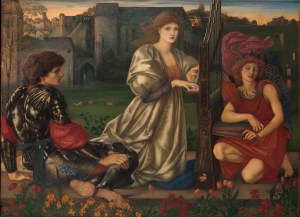
The Love Song (1868–77), Edward Burne-Jones. The Metropolitan Museum of Art, The Alfred N. Punnett Endowment Fund, 1947
It is presented just next to a twilight scene by Burne-Jones entitled The Love Song, a painting which, in 1878, moved Henry James to compare it to ‘some mellow Giorgione or some richly glowing Titian.’ Burne-Jones was inspired by the 15th-century Venetian painter Carpaccio: this masterwork depicts three figures in an Arthurian idyll, inspired by an old Breton song, ‘Alas, I know a love song/Sad or happy, each in turn.’ The words capture perfectly the art and soul of the entire Pre-Raphaelite Movement, shot through with aesthetic and religious transport, erotic bliss and disappointment.
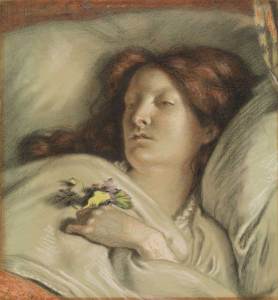
Convalescent, Portrait of the Artist’s Wife (1872), Ford Madox Brown. The Metropolitan Museum of Art, Rogers Fund, 1909
The Convalescent, drawn in pastel on paper by the ‘unofficial Pre-Raphaelite’ Ford Madox Brown, underscores the theme of female passivity and a certain access to nerves. It made me think of the line from John Fowles’ tale of the period, The French Lieutenant’s Woman: ‘Her torture was her delight.’
Love, languor and laudanum aside, we are invited here to contemplate a rich array of works – some, including many books from Morris’ Kelmscott Press and ones designed by Aubrey Beardsley, sequestered in vitrines – that capture a unique flowering of British art. This carefully calibrated exhibition alternates between fine and decorative art, including luminous chargers by William de Morgan, the stained glass panel by Burne-Jones, King David the Poet, and tapestries by Burne-Jones woven at Merton Abbey Tapestry works for Morris & Company.
Paintings by Simeon Solomon and Dante Gabriel Rossetti, notably the watercolour and gouache Lady Lilith of 1867 (a portrait of the latter’s mistress Fanny Cornforth), all summon the quasi-mystical spirit of an age in which making – in all its forms – reached an apotheosis of material infused with spirit.
‘The Pre-Raphaelite Legacy: British Art and Design’ is at the Metropolitan Museum of Art, New York, until 26 October.
Unlimited access from just $16 every 3 months
Subscribe to get unlimited and exclusive access to the top art stories, interviews and exhibition reviews.

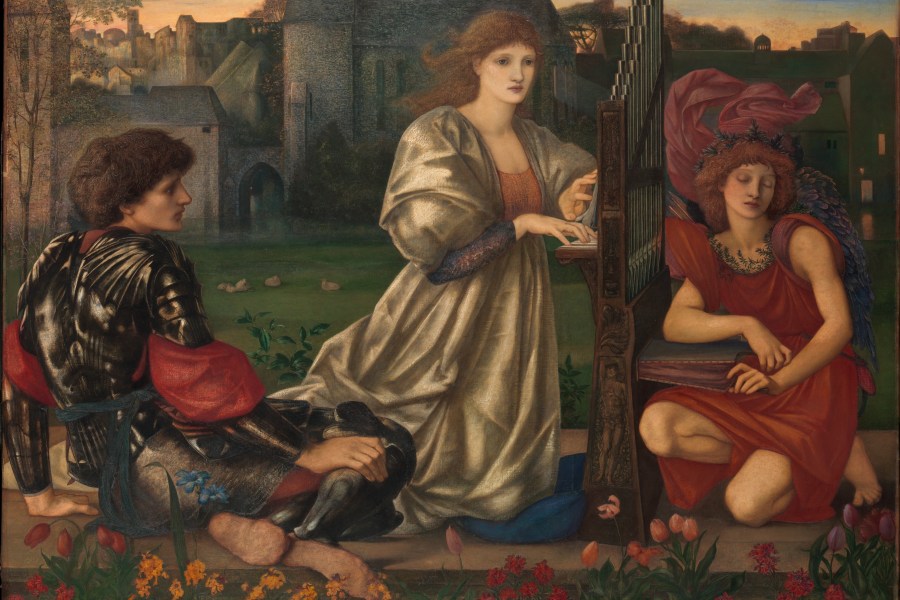
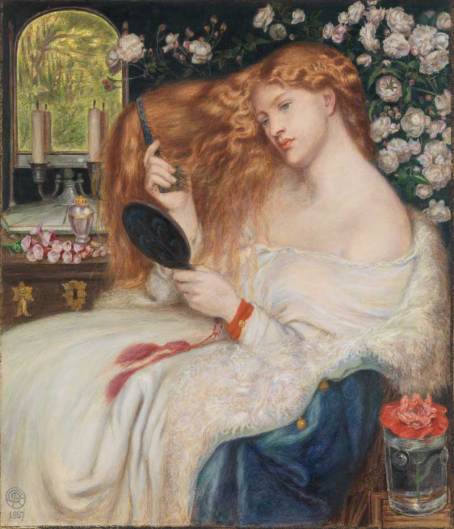
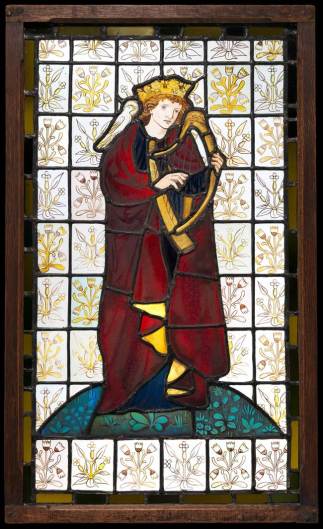
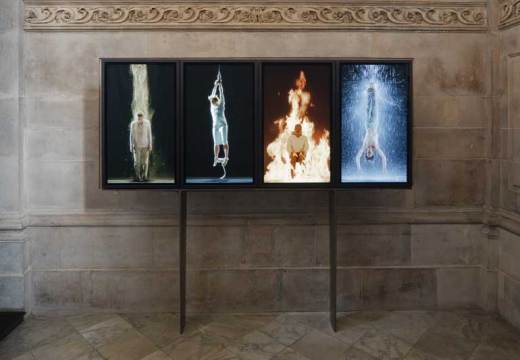

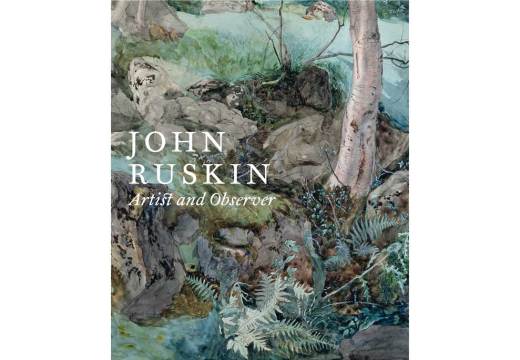









![Masterpiece [Re]discovery 2022. Photo: Ben Fisher Photography, courtesy of Masterpiece London](http://www.apollo-magazine.com/wp-content/uploads/2022/07/MPL2022_4263.jpg)
Why are fathers so absent from art history?